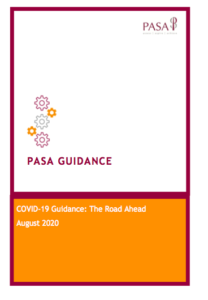 PASA has issued follow up Covid–19 Guidance designed to highlight best practice for administrators as they navigate their way out of lockdown.
PASA has issued follow up Covid–19 Guidance designed to highlight best practice for administrators as they navigate their way out of lockdown.
Kim Gubler, PASA Chair, commented; “When we issued the PASA Guidance to administrators as we entered lockdown on 23 March, little did we know the total impact it would have on all our lives. Fast forward four months and although lockdown has eased, for administrators some of the changes made through the period could become permanent. We’re realising we can no longer talk about ‘returning to normal’, but rather how we can adapt and evolve the way high quality administration is delivered in future.
“All administrators should have learned something new during the last few months, whether about their people, their technology or their members. PASA has pulled together these learnings to shape our Guidance, we hope organisations can use this to learn from each other’s experiences as they look to implement their plans for the future.”
This follow up guidance will look at:
- Visibility & Accessibility
- Digital Workflow
- KPIs and projects
- Offshoring
- Face to face meetings
- Identity Verification (IDV)
- Investment Managers and AVCs
- Homeworking
- Wellbeing and productivity
- Recruitment
Gubler added: “Overall, the pension administration sector has coped admirably with the challenges created by Covid-19. Many administrators had already anticipated the need for some form of remote working and had triggered their Covid specific business continuity plans. In our initial Guidance, we stated administrators needed to be resilient in the face of lockdown’s challenge. As we move forward this is even more critical. Lockdown was a onetime measure imposed on us all, at the same time. However, the rate and way administrators react and respond to the easing of lockdown will be very different, driven by how their own organisations implement their office return plans. Each will have to map their own path according to a huge number of factors. As administrators move forward, they need both flexibility to accommodate different ways of working, and the differing needs of members.”
The guidance can be found here.
